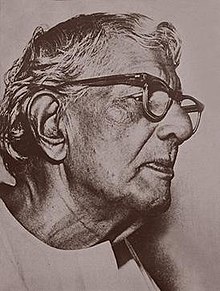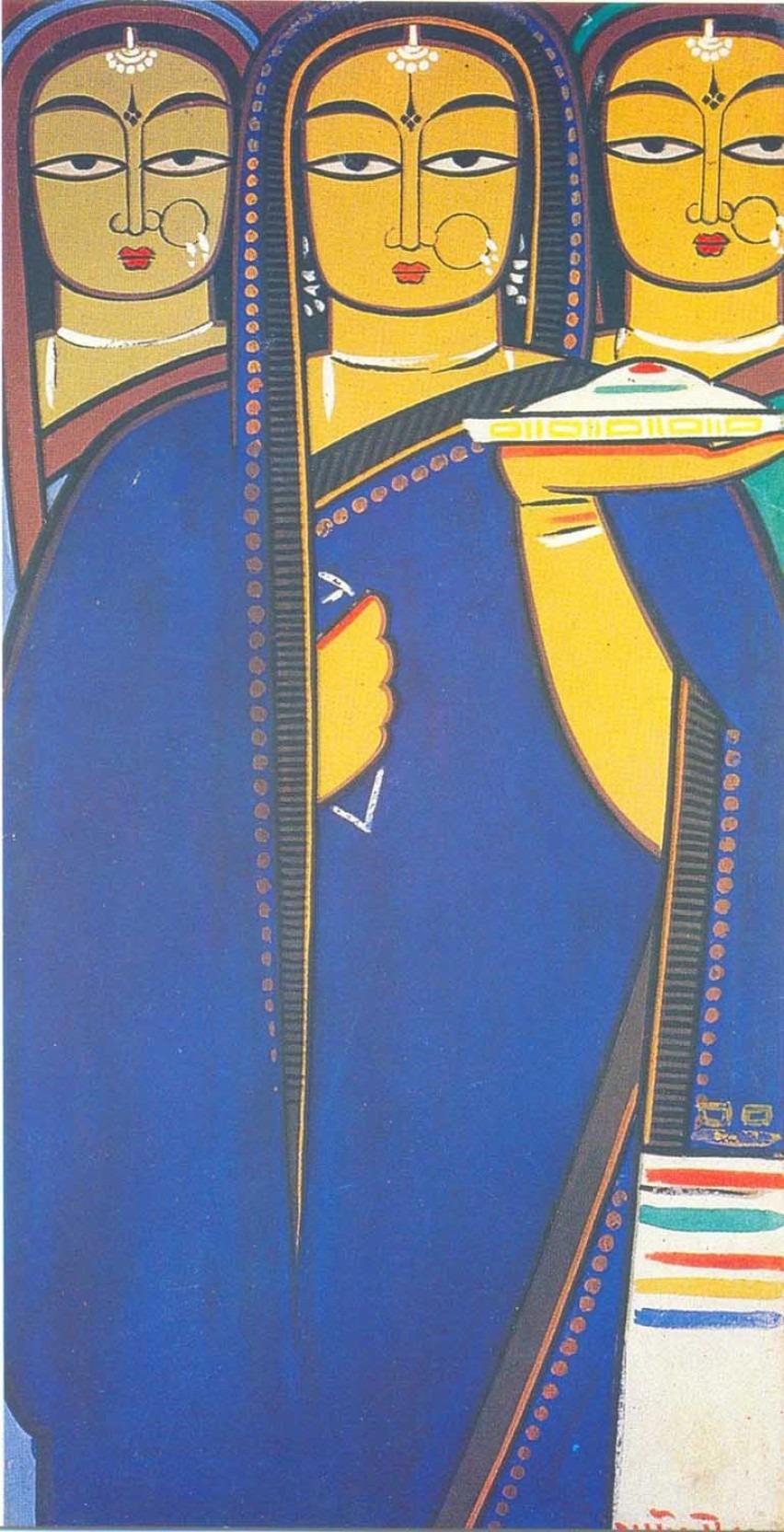Are you looking for Three Pujarins – Jamini Roy then check out this post to know more. Jamini Roy (1887-1972) was an Indian painter. He was one of the major artists in 20th-century Indian art history. Also, it is believed that he was one of the earliest and significant modernists in Indian art.
He was the first Indian artist whose work was both quintessentially Indian and modern. He was one of the most famous people whose artistic originality and contribution to the emergence of modern art in India remains unquestionable.
Three Pujarins
Roy started his career by commissioned portrait painting. In the 1920s his left portrait painting to discover his own style. He started his own style based on Bengali folk traditions.
He focused on three things in his style i.e. first to capture the essence of simplicity embodied in the life of the folk people; second to make art accessible to a wider section of people, and third to give Indian art its own identity.

The Three Pujarins i.e. Three priestesses is a tempera on paper with dimensions of 36.5 cm X 70.5 cm. He used gouache technique and sensually painted firm angular lines.
The painting depicts three women in a very mature style as they worship, have been painted with thick, black contour lines with the application of the blue colour of the drape done flatly.
Jamini Roy’s Style
All of the three women are dressed up in classical Bengali traditional way, veiling their heads with the Indigo coloured sarees which they are wearing in Bengali style. Indigo colour is an important historical reference to the uprising of Indigo peasants in Indigo movement against the British Government.
All three women are wearing head locket, nose-ring, ear-rings, necklace, bangles and bindi on the forehead at the center of their eyebrows.

Awards and Recognition
The painting had been displayed in the exhibition ‘Jamini Roy: Journey to the Roots 1887 – 1972 ‘ at the National Gallery of Modern Art, New Delhi on the occasion of the 125th Birth Anniversary of the artist, June – December 2013 and Jamini Roy (1887-1972) Centenary Exhibition (New Delhi: National Gallery of Modern Art, 1987).
Jamini Roy won many awards including Viceroy’s Gold Medal in 1934 and Padma Bhushan (the third-highest award a civilian can be given) in 1955. In 1955 he was made fellow of Lalit Kala Academy which is the highest honor in fine arts.



